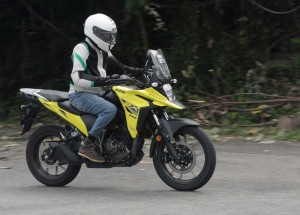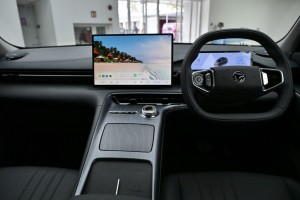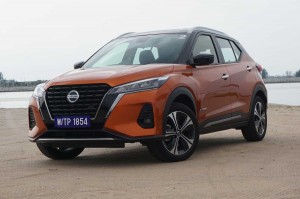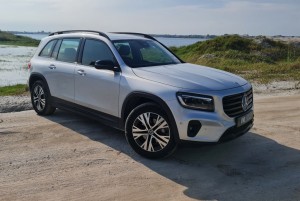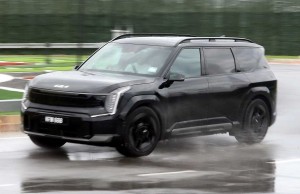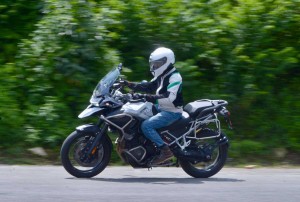PETALING JAYA: Last year, motorcyclists made up 75.3% of road deaths in Malaysia, according to the Malaysia Road Fatalities Index by Transport Ministry.
It was reported that 6,473 people were killed in road accidents, 4,880 of them motorcyclists.
From 2010 to 2019, on average, 59% of those who died in road accidents were on motorcycles.
Malaysian Institute of Road Safety Research (Miros) director-general Assoc Prof Dr Siti Zaharah Ishak Siti Zaharah said the number of fatalities from road accidents had not dropped, with an average of 6,300 deaths per year from 2010 to 2023.
“We are recording over 6,000 deaths from road accidents annually, with the exception of 2020 and 2021, which recorded 4,297 and 4,539 road fatalities respectively.
“This drop was due to fewer vehicles on the road when the movement control order was implemented during the Covid-19 pandemic,” she said.
In Klang Valley, which encompasses Selangor, Kuala Lumpur and Putrajaya, 1,230 road fatalities were recorded last year.
Selangor had 1,037 road fatalities with Kajang topping the chart at 123 deaths, followed by Shah Alam and Petaling Jaya, each with 91.
Kuala Lumpur recorded 186 road fatalities while Putrajaya had seven.
“This data shows that urban areas such as Kuala Lumpur, Petaling Jaya and Kajang tend to have higher fatalities, likely due to higher traffic volume and congestion.
“In contrast, rural and less densely populated districts like Sabak Bernam recorded fewer fatalities.
“Districts with higher traffic density also contribute to these numbers, highlighting the need for improved traffic management and road safety in these areas,” said Siti Zaharah.
Miros also found that 50% of road fatalities occurred on federal roads, while 19% were on local streets or municipal roads and 16% on state roads.
“Police statistics show that between 2019 and 2023, 15% to 22% of fatal motorcycle crashes occurred on expressways.
“Motorcycles have a significantly higher incidence of single-vehicle crashes compared to other vehicle types, accounting for 68% of such incidents.”
Miros’ studies also show that loss of control was the primary cause of fatal motorcycle crashes in Malaysia.
Siti Zaharah said this was often a result of high speed, sharp turns or sudden manoeuvres.
Other contributing factors, she said, included rear-end collisions often due to tailgating or sudden stops, besides poor visibility caused by inadequate lighting and slippery road conditions.
“Reckless riding at high speeds is a significant factor.
“Although multiple-vehicle crashes (MVC) are less common than single-vehicle crashes, MVCs involving motorcycles have a higher fatality rate,” she added.

Siti Zaharah said one of the more common scenarios in motorcycle crashes on highways involved collisions with stationary vehicles.
“A significant number of motorcycle crashes occur when riders collide with vehicles in the emergency lane.
“These vehicles can include lorries and cars that have stopped due to mechanical issues or other reasons.
“The risk is particularly high at night or under low visibility conditions when motorcyclists may not see the vehicles in time.”
Miros also found many motorcycle crashes occurring during peak commuting hours when riders are travelling to and from work.
“These crashes often result from increased traffic density, time pressures and rider fatigue,” she said.
“Vehicles like cars, buses and lorries can create hazardous conditions for motorcyclists, who are more physically vulnerable.”
Through various studies conducted over the years, she said Miros identified several types of reckless behaviour that jeopardised motorcyclists’ safety.
“Dangerous behaviours like stunt riding, commonly known as rempit, and illegal racing are also prevalent causes of crashes.
Utilisation of exclusive motorcycle lanes may be low due to insufficient lighting in tunnels.Utilisation of exclusive motorcycle lanes may be low due to insufficient lighting in tunnels.
“These activities involve high speeds and dangerous manoeuvres, leaving motorcyclists vulnerable to losing control or colliding with other vehicles or objects on the highway.
“Other reckless riding behaviours include speeding, which reduces reaction time and increases crash severity, lane splitting and filtering.
“Riding without protective gear, ignoring traffic signals and signs, improper overtaking and distractions such as using mobile phones – especially among p-hailing riders – also contribute to the risks faced by motorcyclists.”

There are three types of motorcycle lanes: exclusive, non-exclusive and paved road shoulders.
An exclusive motorcycle lane is built separately from the traffic carriageway and has a physical barrier, while a non-exclusive motorcycle lane is part of the traffic carriageway and is separated by a non-physical barrier.
Paved shoulders are part of the traffic carriageway marked by a normal-edge line, where motorcyclists can distance themselves from other vehicles.
Within Malaysia, there are 351.1km of exclusive motorcycle lanes and 204.9km of non-exclusive motorcycle lanes.
“Our earlier studies have shown a 39% reduction in crashes with the implementation of exclusive motorcycle lanes,” said Siti Zaharah.
“However, utilisation rates remain low due to factors such as water ponding, poor pavement conditions, roadside hazards and even criminal threats.
“Other reasons include longer travel distances on the motorcycle lanes, violations by other vehicles using the lanes and inconsistent lane layouts.
Many riders disregard Kesas Highway rules that prohibit motorcyclists on the main carriageway from 6am to 11pm.Many riders disregard Kesas Highway rules that prohibit motorcyclists on the main carriageway from 6am to 11pm.
“Improvements and maintenance, however, such as those on Federal Route 2, have increased usage rates from 81% in 2016 to 92% in 2023.”
Motorcyclists are legally required to use motorcycle lanes when available, as mandated by Section 79(2) of the Road Transport Act 1987.
Siti Zaharah said Miros was assessing the safety of exclusive motorcycle lanes and providing them with star ratings.
“The rating system will help identify locations with the best conditions for motorcyclists and guide maintenance priorities by highlighting lower-rated lanes that may require urgent upgrades or repairs.
“The initiative aims to enhance the overall infrastructure for motorcyclists, ensuring safer travel routes and encouraging the use of designated lanes.
“Highly rated locations can serve as benchmarks when designing new exclusive motorcycle lanes, promoting consistent safety standards across the network,” she said.

To promote the safety of motorcyclists, several programmes have been introduced to equip them with road training and skills.
“Since it was found that most road crashes involved motorcyclists commuting to work, Miros has a Commuting Safety Support Programme (CSSP) that is a direct intervention programme.
“It was launched in 2017 in cooperation with the Social Security Organisation (Socso) to train motorcycle riders towards enhancing travel safety knowledge, awareness and basic skills,” Siti Zaharah said.
Miros also offers the P-hailing Safe Riding Training that covers safe and defensive riding techniques.
Under the Miros Ori-Rider programme, motorcyclists are also provided specialised training for safe riding and motorcycle maintenance.
The Miros Motorcycle Collision Alert System (MCAS), a pilot project launched last year with 35 units installed in 18 motorcycle models, showed an 89% drop in crashes and over 1,000 avoided collisions.
It gives real-time alerts to enhance riders’ situational awareness, enabling them to gauge safe distances and brake safely.
The Anti-lock Braking System will also be made mandatory for all new motorcycles 150cc and above, beginning Jan 1 next year, which will enhance braking safety and reduce crash risks. — JAROD LIM

